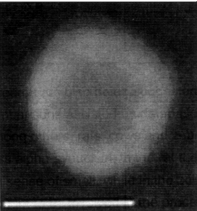Parkinson disease, first described by James Parkinson in 1817, is a growing national problem, with more than half a million Americans affected at any one time. Most people are over 50 years old when the disease appears, although it can occur in younger patients. It is a neuro-degenerative disease that manifests as a tremor, muscular stiffness and difficulty with balance and walking. A classic pathological feature of disease is the presence of an inclusion body, called the Levy body, in many regions of the brain.
Parkinson disease was not though to be heritable, and research was primarily focused on environmental risk factors such as viral infections or neurotoxins. However a positive family history was gradually perceived to be a risk factor, a view that was confirmed last year which a candidate gene for some cases of Parkinson disease was mapped to chromosome 4. Mutation in this gene have now, been linked to several Parkinson disease families. The product of this gene, a protein called alpha—synuclein is a familier culprit, a fragment of it is known constituent of Alzheimer disease plaques.
 | Fig. 48: An overlapping immunofluorescent stain showing lapha-synuclein localization in Lewy bodies of Parkinson's disease brain. The Lewy body is stained green (with antibody against ubiquitin), while alpha-synuclein is stained red. Where both ubiquitin and alpha-synuclein are found, the stain appears yellow/orange. With thanks to M. Polymeropoulos for supplying the picture. |
 Prof. Dr. Sohan Raj Tater
Prof. Dr. Sohan Raj Tater
 Doctoral Thesis, JVBU
Doctoral Thesis, JVBU